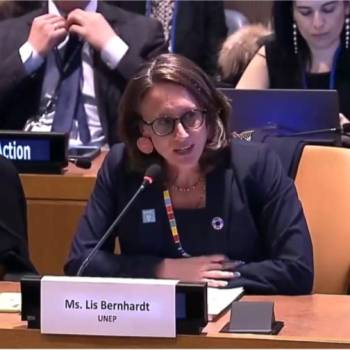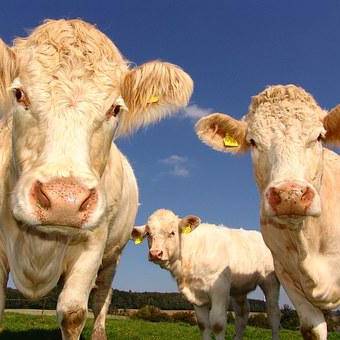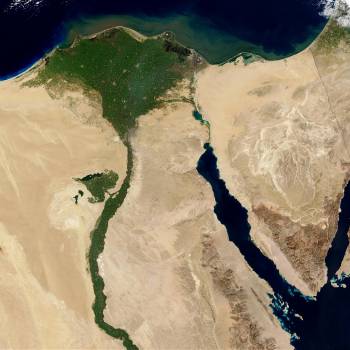
Over the past 12 years, tigers have increased dramatically in some areas, but disappeared from others: a thorough assessment of these trends is essential ahead of the next Global Tiger Summit in September 2022.
In 2010, the 13 countries that still conserved populations of tigers in the wild converged on St. Petersburg, Russia, to sign a summit declaration aimed at doubling the number of tigers before the next “Year of the Tiger” moon in 2022.
As we approach the second Global Tiger Summit on September 5, 2022, in Vladivostok, Russia, it is critical that we assess the progress and failures of tiger recovery efforts so far. Over the past 12 years, tiger numbers have increased dramatically in some areas, while tigers have disappeared from others. Overall, this first phase of the Global Tiger Recovery Program shows that tiger numbers can be restored, but progress is hard-won and fragile – tiger conservation needs to be scaled up urgently to achieve success at long term. Therefore, we need to regroup and reevaluate how to move forward to build a more successful collaborative effort with a clear vision that establishes spatial prioritization of where we need to focus for tigers and what needs to be done. be done specifically to ensure the survival and recovery of viable and ecologically functional wild tiger populations within their historic range.
In 2010, there was no universal consensus on the best approaches to tiger conservation. There have been debates in the scientific literature and in lecture and workshop halls, some friendly, some heated. Of course, some debate continues, but as we head into the next 12 years of tiger conservation, there is now a clear consensus on many things. We know what it takes to save tigers. There are several success models that have similar and predictable parameters that can be emulated. There has been a convergence of thought on the best approaches to tiger conservation. We build a catalog of lessons learned and apply those lessons where people are open to adopting the practices. And we learn to cooperate better in pursuit of a greater good.
Perhaps most importantly, we learned that tiger conservation cannot be viewed or executed as a single species conservation initiative, but rather as a platform to address some of the major global concerns facing both natural and human-dominated communities face. Single-species conservation efforts, even those focused on charismatic wildlife like tigers, are likely to lack political and financial support unless they also integrate broader environmental priorities and address the challenges challenges faced by the relevant governing bodies.
Perhaps because the tiger is such an iconic species, there have so far been few attempts to place tiger conservation in the context of global concerns such as climate change, zoonoses and the impacts destabilizing factors of forest loss and ecosystem degradation. Far from being isolated, stand-alone issues, these challenges are intertwined, and success in any area will require a much more holistic approach.
In this context, at least in Asia, tigers can act as an umbrella not only to protect other species, but also to preserve the integrity of ecosystems, stabilize the climate and promote a “One Health” strategy that recognizes that human health, animal health and the health of the planet are inextricably linked. As such, tiger conservation provides a practical and effective framework for addressing the multiple threats that could destabilize the human and wildlife populations of Asia which, despite holding around 60% of the world's human population, remains l one of the most biologically diverse regions in the world.
Collaboration is an essential element of conservation success. The NGO community is known for its competitive nature in the conservation world, for example, as many organizations seek support from the same funding sources. Ironically, this has sometimes led to a perverse focus on competing with other organizations rather than collectively achieving our aligned conservation goals. While competition can be a powerful and helpful force leading to improvements in efforts and strategic approaches, the competitive nature of conservation funding can limit success by discouraging collaboration among multiple organizations with varying strengths.
“This Year of the Tiger, we – Fauna and Flora International (FFI), the International Union for Conservation of Nature (IUCN), Panthera, TRAFFIC, Wildlife Conservation Society (WCS) and World Wildlife Fund ( WWF) – we are united around a common vision to ensure a viable future for the tiger. As a group of organizations that has worked for decades with partners to conserve tigers, our shared vision is a long-term presence of viable and ecologically functioning populations of wild tigers secure in their natural habitats, with representation and links across their native range, respected and valued by neighboring human communities and beyond, a magnificent symbol of nature in all its beauty, complexity and wonder for future generations.
We have proposed four main goals over the next 12 years of tiger conservation:
1) secure and increase the number of tigers in all existing populations;
2) Expand the range of tigers by managing environments to encourage expansion into new areas;
3) reverse the tide by reintroducing tigers to countries and landscapes that have lost their tiger populations;
4) Restore ecological diversity by restoring and maintaining tiger populations in all major ecological settings within the tiger's native range.
To achieve these goals, we are committed to supporting range countries to strengthen the Global Tiger Initiative by securing strong and sustainable long-term funding. We further call for funding mechanisms to dispel systems that encourage separate and competitive actions by conservation actors, as this is an inefficient and outdated approach. Instead, we must usher in a new era of collaboration. Funding agencies can support this process by encouraging collaborative efforts rather than reinforcing the competitive nature of funding single agencies in the status quo.
Our collaboration, resulting in a single voice for advocacy and investment in conservation interventions, is a much-needed transition as we enter the next phase of tiger conservation and the Global Tiger Recovery Program. We are ready and willing to continue to support tiger range countries in securing key tiger areas, addressing trade threats, human-wildlife coexistence and sharing good conservation practices. development of green infrastructure and, where possible, planning for the restoration of wild tiger populations.
And we will implore governments of tiger range countries, donor organizations and the global public to understand that saving tigers is about more than saving a single species: it is about saving the Asia – its abundance of resources, its climate, and the health of its people and other living inhabitants. So, while saving tigers is not a cure for everything plaguing Asia, it is a very good start.
Saving the tigers will make Asia and the world a better, healthier and safer place for all of us to live. And to that, we will commit our resources, our energy and our collective will.”
Signatories
Dale Miquelle, Tiger Program Coordinator, WCSSugoto Roy, Coordinator, Integrated Tiger Habitat Conservation Programme , UICNStuart
Chapman, Living Tigers Initiative Leader, WWFAbishek Harihar , Deputy Tiger Program Director, PantheraChristine
Breitenmoser, Co-Chair, IUCN SSC Cat Specialist Group
Debbie Martyr, Technical Advisor, Kerinci Seblat Tiger Protection & Conservation , FFIDechen
Dorji, Senior Director, Asia Wildlife, WWF- USElizabeth
Bennett, Vice President, Species Conservation, WCSJohn
Goodrich, Chief Scientist and Tiger Program Director, PantheraLuke
Hunter, Executive Director, Big Cats Program , WCS
Micheal Belecky, Policy Manager, Tigers Alive Initiative, WWFUrs
Breitenmoser, Co-Chair, UICNAket CSC Cat Specialist Group Badola , Tiger Trade Manager, TRAFFIC
Posted on 2022-02-05 10:41








Comments